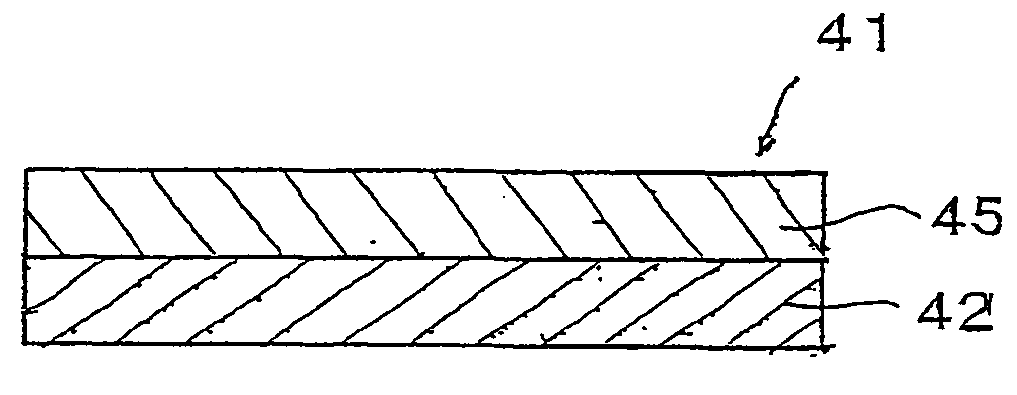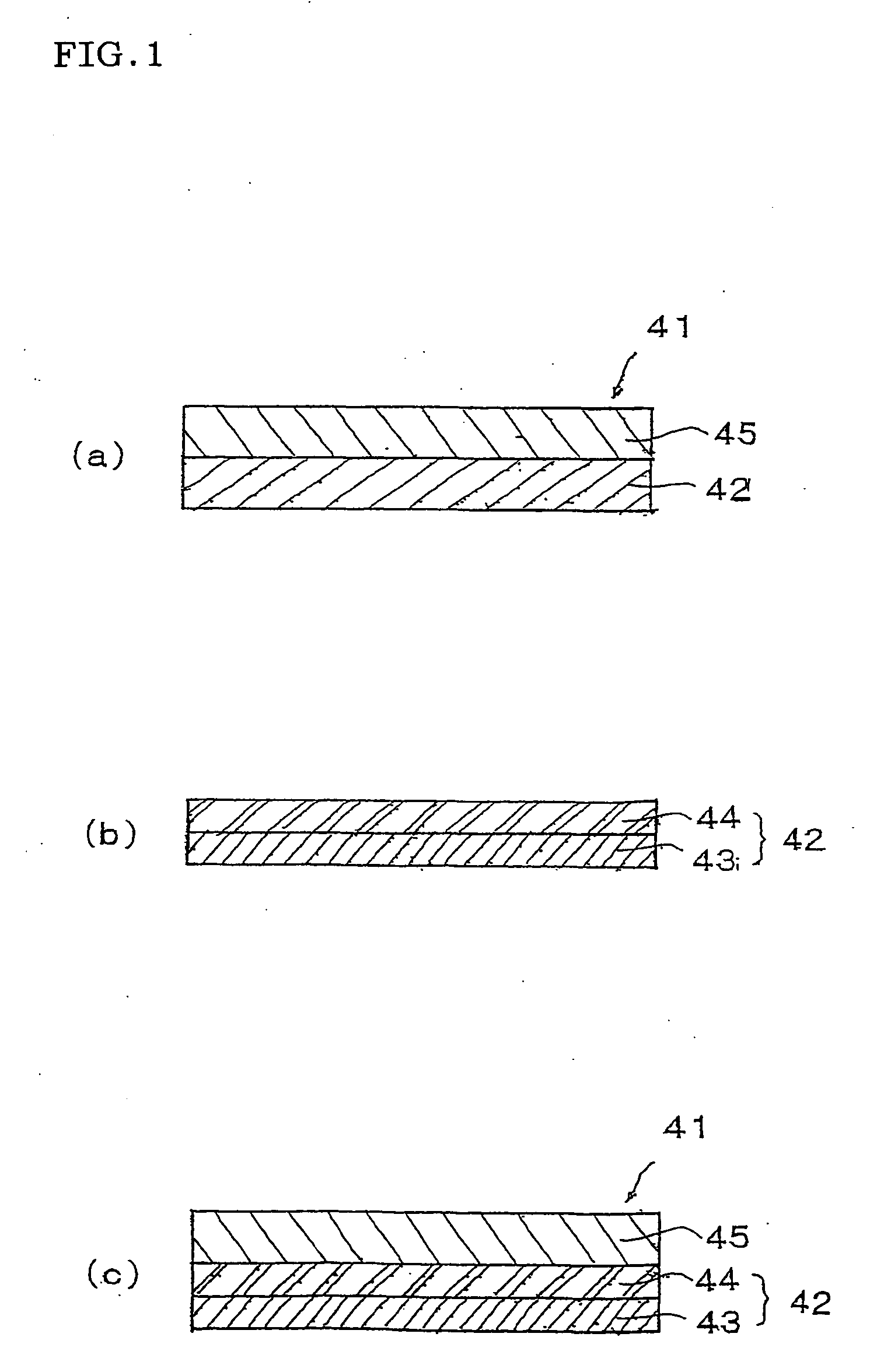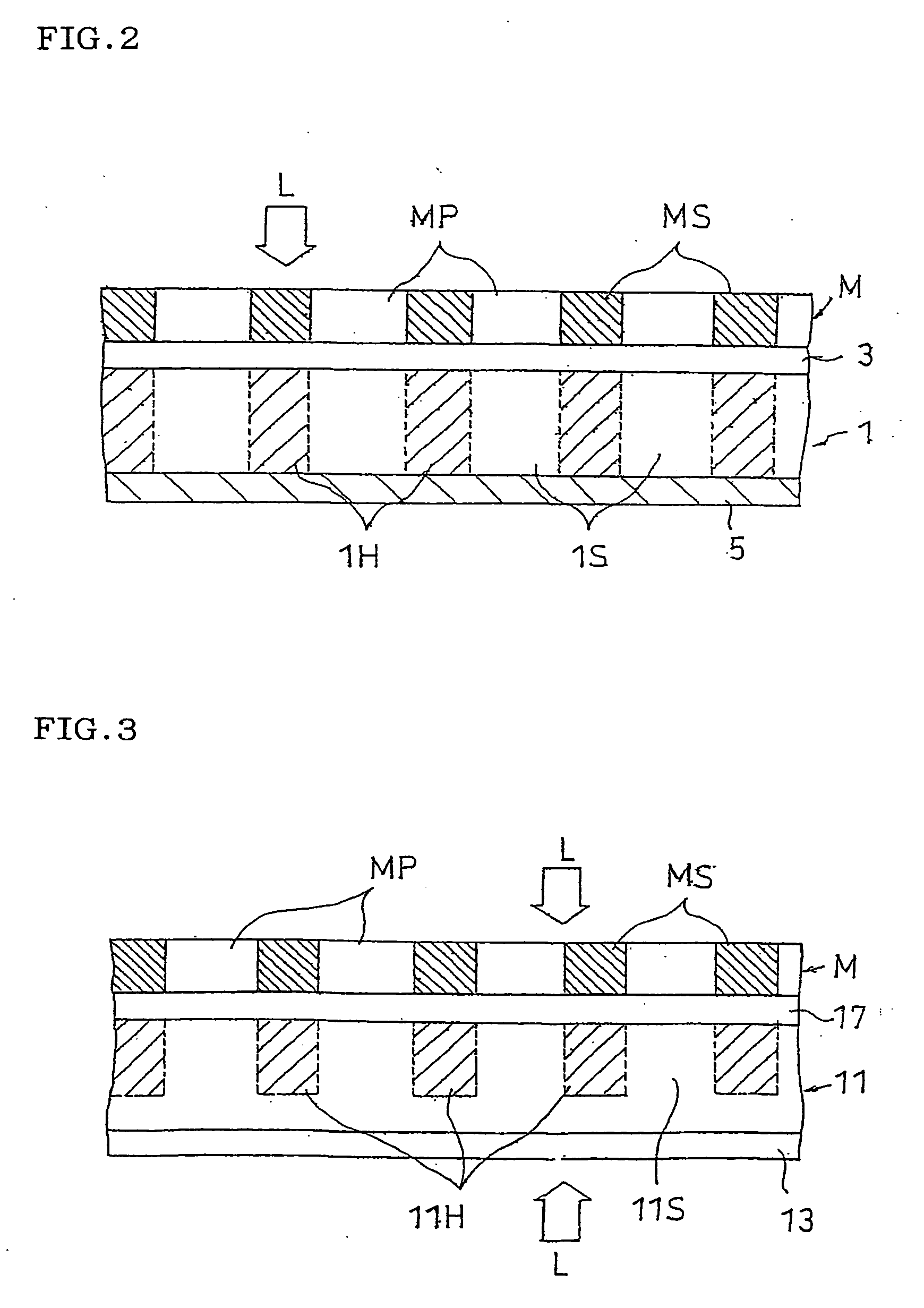Polishing pad and cushion layer for polishing pad
a polishing pad and cushion layer technology, applied in the field of polishing pads, can solve the problems of poor cushioning characteristics, difficult to give uniform pressure onto the whole surface of the polishing pad, and high polishing ra
- Summary
- Abstract
- Description
- Claims
- Application Information
AI Technical Summary
Benefits of technology
Problems solved by technology
Method used
Image
Examples
example 1
Example 1-1
[0304] 125 g epoxy acrylate (EX5000, methyl ethyl ketone solvent, solids content 80%, manufactured by Kyoeisha Chemical Co., Ltd.), 1 g benzyl dimethyl ketal and 0.1 g hydroquinone methyl ether were mixed under stirring by a kneader, and the solvent was removed under reduced pressure, whereby a solid photosetting composition was obtained. This composition was sandwiched between films and pressed at 10 atmospheric pressure with a pressing machine at 100° C., to give a sheet molding of 2 mm in thickness. This sheet molding was irradiated with UV rays, and the other side with a mask film having a desired pattern drawn thereon was irradiated with UV rays, and after the films were removed, the sheet was developed by rubbing with a brush in a toluene solvent. The sheet was dried at 60° C. for 30 minutes to give a polishing pad.
[0305] This polishing pad was evaluated for polishing by the polishing evaluation method A.
example 1-2
[0306] 200 g polyurethane resin (Vylon UR-1400, toluene / methyl ethyl ketone (1 / 1 by weight) solvent, solids content 30%, manufactured by Toyo Boseki Co., Ltd.), 40 g trimethylol propane trimethacrylate, 1 g benzyl dimethyl ketal and 0.1 g hydroquinone methyl ether were mixed under stirring by a kneader, and the solvent was removed, whereby a solid photosetting composition was obtained. This composition was sandwiched between films and pressed at 10 atmospheric pressure with a pressing machine at 100° C., to give a sheet molding of 2 mm in thickness. This sheet molding was irradiated with UV rays for a predetermined time, and the other side with a mask film having a desired pattern drawn thereon was irradiated with UV rays, and after the films were removed, the sheet was developed. The sheet was dried at 60° C. for 30 minutes to give a polishing pad. Its subsequent evaluation was carried out in the same manner as in Example 1-1.
example 1-3
[0307] 145 g urethane acrylate (UF503LN, methyl ethyl ketone solvent, solids content 70%, manufactured by Kyoeisha chemical Co., Ltd.), 1 g benzyl dimethyl ketal and 0.1 g hydroquinone methyl ether were mixed under stirring by a kneader, and the solvent was removed, whereby a solid photosetting composition was obtained. This composition was sandwiched between films and pressed at 10 atmospheric pressure with a pressing machine at 100° C., to give a sheet molding of 2 mm in thickness. This sheet molding was irradiated with UV rays for a predetermined time, and the other side with a mask film having a desired pattern drawn thereon was irradiated with UV rays, and after the films were removed, the sheet was developed. The sheet was dried at 60° C. for 30 minutes to give a polishing pad. Its subsequent evaluation was carried out in the same manner as in Example 1-1.
PUM
| Property | Measurement | Unit |
|---|---|---|
| glass transition temperature | aaaaa | aaaaa |
| specific gravity | aaaaa | aaaaa |
| glass transition temperature | aaaaa | aaaaa |
Abstract
Description
Claims
Application Information
 Login to View More
Login to View More - R&D
- Intellectual Property
- Life Sciences
- Materials
- Tech Scout
- Unparalleled Data Quality
- Higher Quality Content
- 60% Fewer Hallucinations
Browse by: Latest US Patents, China's latest patents, Technical Efficacy Thesaurus, Application Domain, Technology Topic, Popular Technical Reports.
© 2025 PatSnap. All rights reserved.Legal|Privacy policy|Modern Slavery Act Transparency Statement|Sitemap|About US| Contact US: help@patsnap.com



